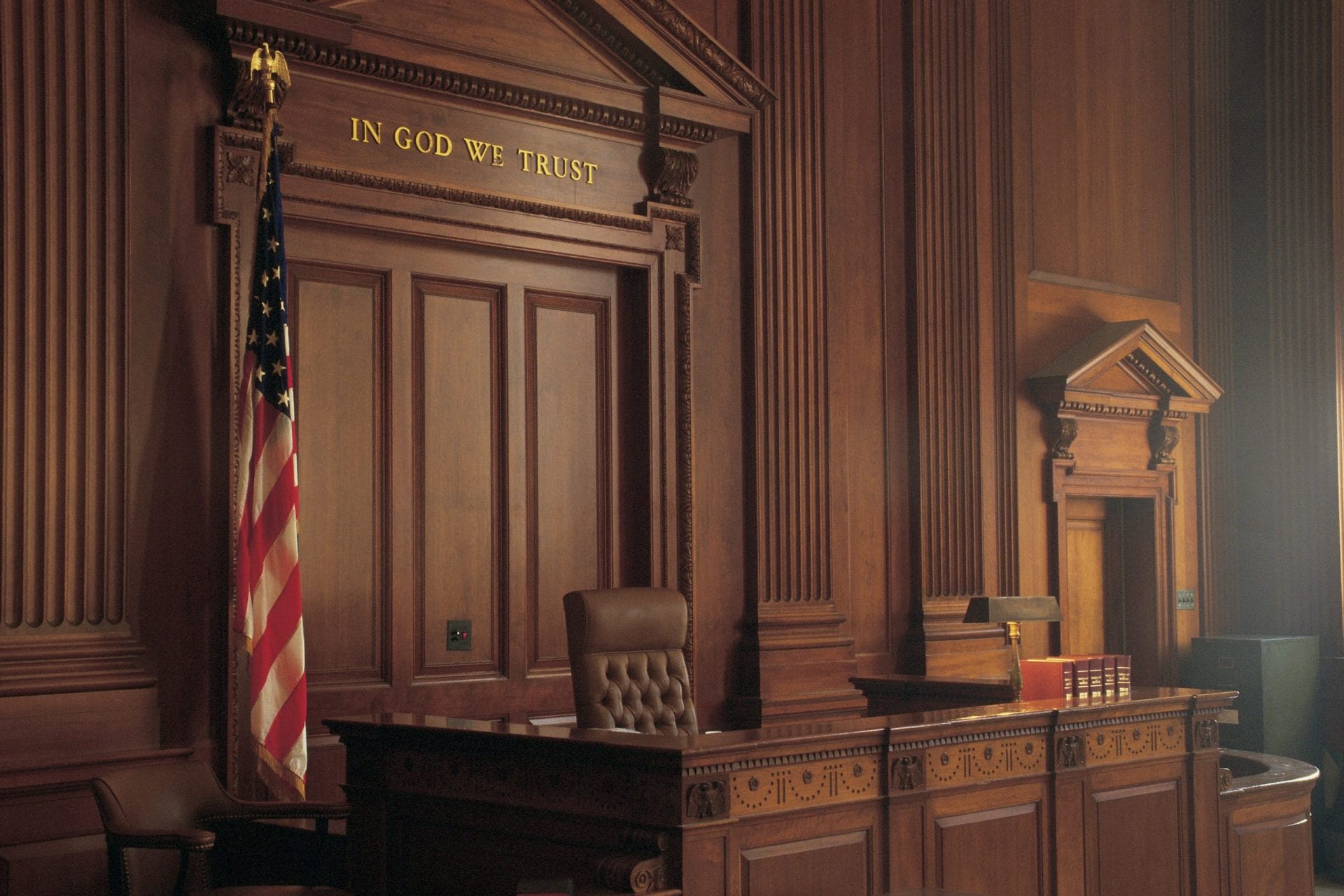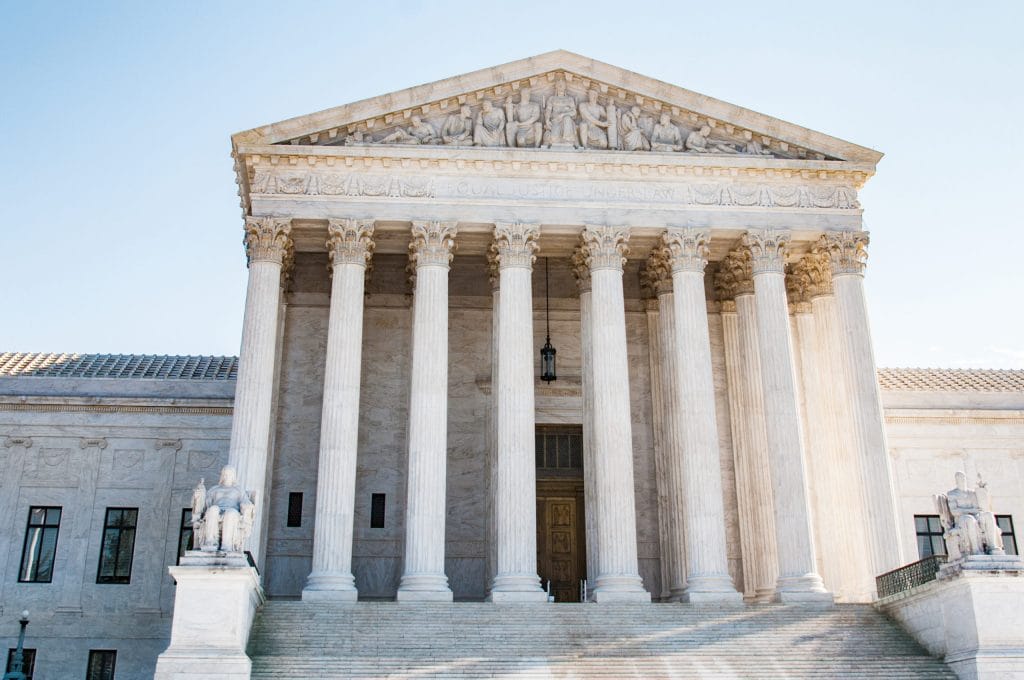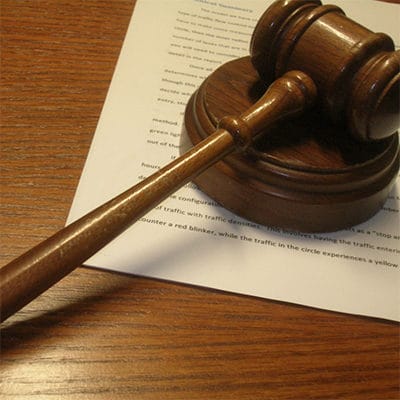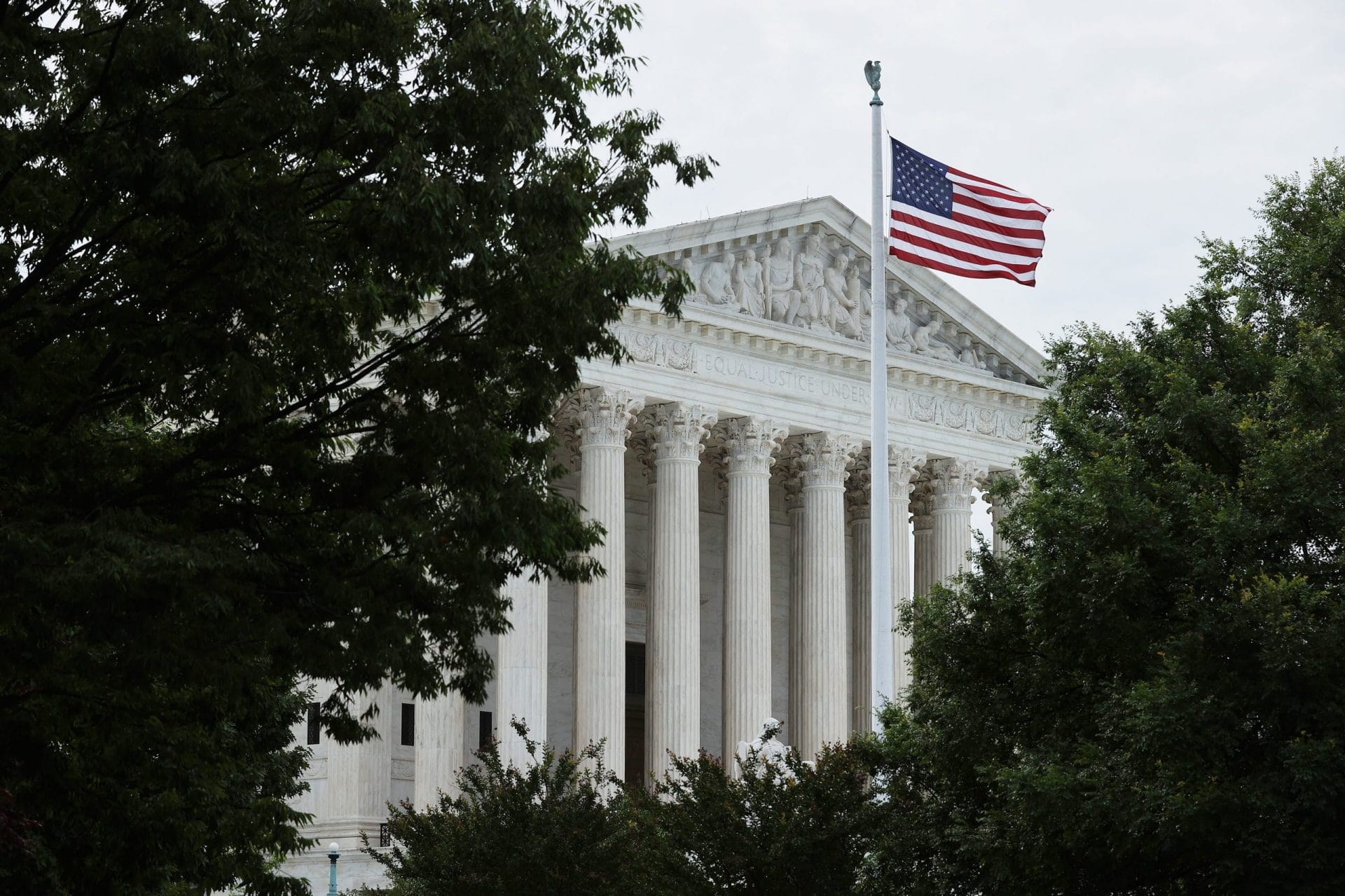
Supreme Court Vacancy: Every Gun Safety Law Depends on the Next Justice
A record number of Americans on both sides of the aisle are demanding gun safety laws. Since President Trump took office, however, progress on gun safety has faced a new line of attack in the courts.
Working with Senate Majority Leader Mitch McConnell, who pledged not to approve a Supreme Court nominee without the National Rifle Association’s endorsement, the president has appointed two Supreme Court justices and far more appellate judges than any recent first-term president. Trump-appointed judges now make up over 30% of the federal judiciary; they include judges who are inexperienced, unqualified, and significantly more extreme than past Republican nominees.
As Giffords Law Center noted in a recent report on Trump’s judges, nowhere has judicial extremism been more flagrant than on the issue of gun safety and the Second Amendment. Gun lobby groups have prioritized efforts to gain power in the courts because, unlike harmful legislative efforts that could be overturned, judicial attacks on gun safety laws do long-term damage by impeding gun violence prevention efforts far into the future. Radical Second Amendment rulings could permanently prevent Congress and state and local lawmakers from effectively regulating the gun industry—even if political will aligns in support of stronger gun safety laws, or new forms of gun violence demand new regulatory responses. The gun lobby’s successful backing of judges willing to sign over our future to far-right, NRA-approved interpretations of the Second Amendment culminated last month with a Ninth Circuit decision by Trump appointee Kenneth Lee striking down California’s restrictions on large-capacity magazines. This Trump-enabled ruling radically diverged from the consensus view that limiting access to weapons of war is a constitutional response to our gun violence crisis—a view previously adopted by at least six Republican-appointed judges.
Now President Trump has pledged to dramatically shift the balance of the Supreme Court by filling the vacancy created by the passing of Justice Ruth Bader Ginsburg. This extraordinary over-reach is occurring just six weeks before the presidential election, and at a time when the president has encouraged his supporters to use firearms to incite violence at protests and intimidate political opposition. Should Trump and McConnell succeed, our nation’s highest court is likely to join lower courts in swiftly announcing extreme interpretations of the Second Amendment that will fuel political violence and threaten every basic gun safety measure we depend on to keep our communities safe. The Senate must hear from the American people before confirming a justice who is likely to alter the foundations of gun safety for decades to come.
MEDIA REQUESTS
Our experts can speak to the full spectrum of gun violence prevention issues. Have a question? Email us at media@giffords.org.
Contact
I. Background on the Second Amendment and Trump’s Judges
Until President Trump began remaking the federal courts in his image, appointing a record number of judges, gun policy was not an unusually partisan issue in the courts. Following the Supreme Court’s landmark 2008 Second Amendment ruling, District of Columbia v. Heller, judges appointed by both Democrats and Republicans voted to uphold key gun safety measures. Judges across the political spectrum agreed that the Second Amendment allows for gun safety regulations like minimum age laws, state and local assault weapon bans, prohibitions on open carry, concealed carry permit requirements, and risk-based gun removal laws.
Those bipartisan rulings are consistent with Justice Antonin Scalia’s majority opinion in Heller. In that case, the Supreme Court struck down Washington DC’s handgun ban but explicitly cautioned that, like all rights, the Second Amendment is “not unlimited”: it is not a “right to keep and carry any weapon whatsoever in any manner whatsoever and for whatever purpose.”
The Court provided a non-exhaustive list of gun regulations it said were presumptively lawful, confirming that public safety laws and self-defense rights can be harmonized under the Second Amendment. Over the last twelve years, the conservative-leaning Supreme Court confirmed that gun safety regulations are consistent with the Constitution by declining nearly every chance to review Second Amendment cases or expand the Heller ruling. This means that until recently, political opposition driven by the NRA, not judges, was by far the biggest obstacle to addressing America’s gun violence epidemic.
But President Trump’s judicial appointees are different. Ideologically aligned with the NRA, many have advertised their extreme views on gun policy in dissenting opinions arguing that appellate precedents upholding gun laws should be overturned. This includes Supreme Court Justices Neil Gorsuch and Brett Kavanaugh, who have both signaled an intention to support the dangerous expansion of Heller that gun lobby groups have thus far been unable to achieve. And it includes judges on the influential federal courts of appeal, many of whom have attempted to audition for the Supreme Court by issuing decisions that echo gun lobby talking points.
As Trump appointees have grown as a share of active federal judges, disturbing Second Amendment rulings are on the rise. These decisions include:
- The Ninth Circuit’s ruling striking down California’s limits on large-capacity magazines.
- A district court decision finding an ammunition background check law unconstitutional.
- Dissenting opinions expressing a desire to radically expand the Second Amendment by striking down federalgun laws, including handgun sales regulations and limits on gun access by people with a history of serious mental illness.
This trend will continue as long as Trump and McConnell continue to fill the courts with NRA-approved judges. And since there may already be four votes on the Supreme Court in favor of a nearly limitless Second Amendment, the confirmation of an additional justice with views on gun policy that are far to the right of the mainstream is likely to result in decisions jeopardizing commonsense gun safety policies for decades to come.
Should a Trump-appointed justice shift the balance of the Court, the harmful effects will be long-lasting and irreversible. Extreme Second Amendment rulings would be poised to jeopardize nearly every gun safety law on the books.
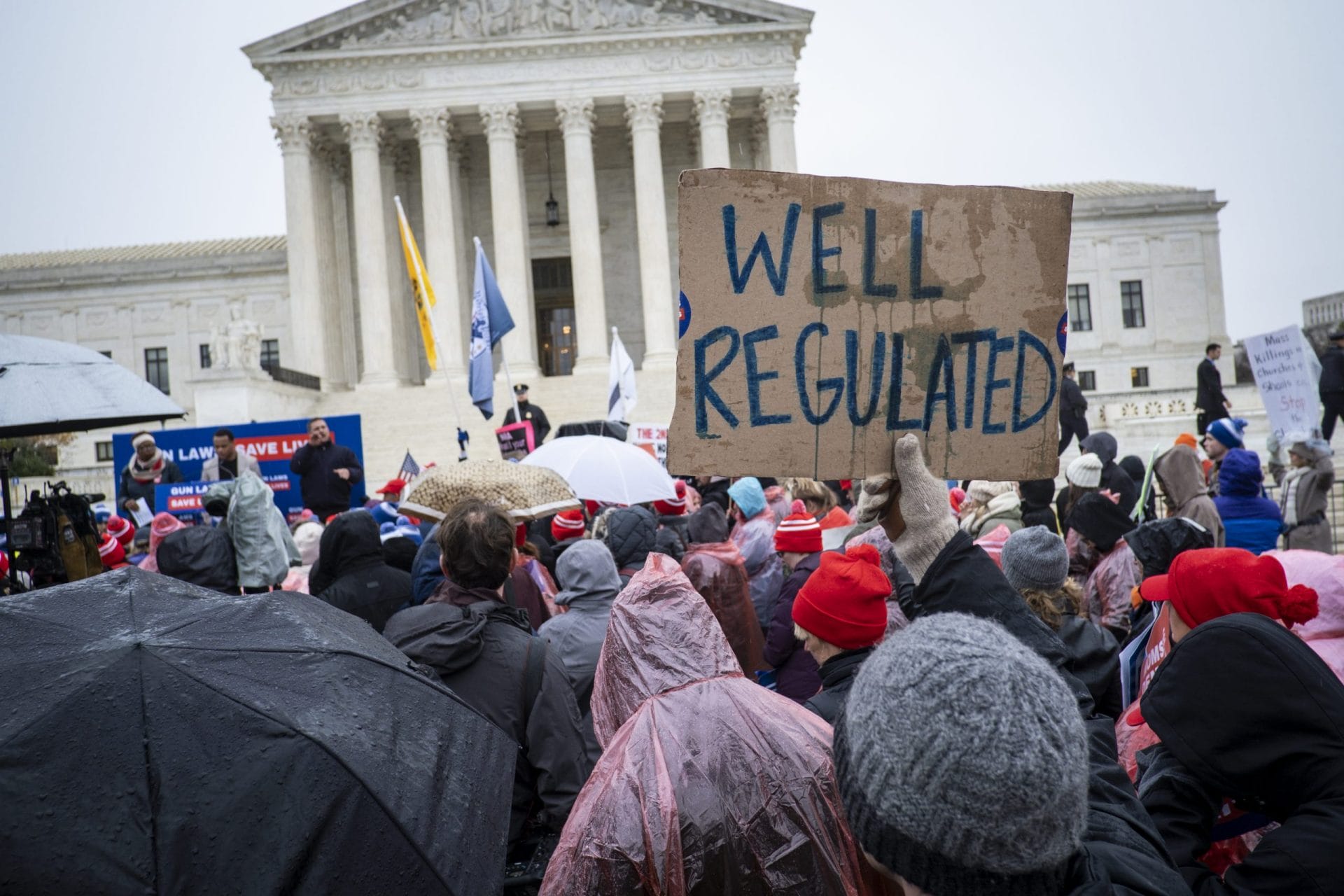
LItigation
the courts
Explore our work defending lifesaving gun laws in the courts and fighting to debunk the gun lobby’s dangerous arguments about the Second Amendment.
II. A New Justice’s Impact on Critical Gun Policy Issues
Earlier this year, as the Supreme Court’s term wound down in June, the Court announced that it would not review ten cases that presented a broad range of Second Amendment questions, from handgun safety requirements to concealed carry licensing standards and restrictions on assault weapons. At the time, Court watchers broadly agreed that the decision not to take up a new gun cases reflected the importance of Chief Justice Roberts as the swing vote on gun cases, standing between a conservative faction that embraces an absolutist view of the Second Amendment and a progressive wing that recognizes strong gun laws go hand in hand with gun rights. But if President Trump is allowed to replace Justice Ginsburg with a judge in the mold of those he has already appointed to the bench, the balance in the Court would shift; the bloc aligned with the gun lobby would wield power; and a host of lifesaving gun laws would be threatened for the foreseeable future.
Numerous gun cases are now in the judicial pipeline, and gun lobby lawyers are aggressively seeking to bring these cases before the high court. With an emboldened conservative majority eager to expand the scope of the Second Amendment, many gun laws that enjoy overwhelming support from the American people would be imperiled. Below are just a few of the critically important types of cases that could make it to the Supreme Court in the immediate future.
Guns in Public
Heller recognized that “the majority of the 19th-century courts” that considered restrictions on concealed carry upheld laws far more stringent than the moderate regulations on public carry that exist today. And Heller also made clear that the Second Amendment does not give Americans the right “to carry arms for any sort of confrontation” or “for whatever purpose” they may choose. Consistent with that guidance, numerous federal courts, including the First, Second, Third, Fourth, Ninth, and Tenth Circuits, have interpreted the Second Amendmentto allow for appropriately strong regulations of guns in public. (Only one outlier court has struck down a good-cause concealed carry permitting law that applied in the District of Columbia). But in spite of this near-consensus upholding restrictions on guns in public based on the obvious threat of violence they pose, gun lobby lawyers continue to challenge restrictions on concealed or open carry, and have repeatedly sought to have the Supreme Court hear a case involving guns in public.
The issue could not be more important in 2020, given a volatile political environment and a dramatic increase in openly carried guns being used to protest new gun safety legislation, resist coronavirus shutdowns, and intimidate peaceful protesters. After the global pandemic forced stay-at-home orders across the country, some protesters openly carrying firearms stormed state legislatures, in at least one case forcing lawmakers to adjourn legislative debate in fear of potential violence. Elsewhere, armed counter-protesters have sought to intimidate those protesting police brutality, and in several cases protestors or counter-protestors have been shot and killed.
Yet, advocates for more guns in public continue to push challenges to public carry laws, including cases involving concealed carry in New York and open carry in Hawaii, and they are explicit in saying the purpose of these lawsuits is to get a case to the Supreme Court. Should Justice Ginsburg be replaced with a justice who views gun issues as other Trump nominees have, the Court could use one of these cases to enshrine in the Constitution a broad right for anyone to carry guns anywhere, eliminating lawmakers’ ability to restrict intimidating displays of firearms that chill First Amendment rights and their ability to ensure that those carrying guns in public have adequate training and qualifications.
Restrictions on Assault Weapons and Large-Capacity Magazines
Heller stated that the Second Amendment is not a “right to keep and carry any weapon whatsoever in any manner whatsoever” and recognized that dangerous and unusual weapons, like those “most useful in military service,” may be prohibited. Many courts, including the First, Second, Third, Fourth, Seventh, and DC Circuits, as well as lower courts in Colorado and California, have applied Heller’s reasoning to uphold restrictions on civilian possession of assault weapons and/or large-capacity magazines (LCMs). In August, however, a split panel of the Ninth Circuit voted 2–1 to strike down an LCM prohibition enacted by California voters in 2016. The majority’s opinion, authored by Trump appointee Kenneth Lee, was the first of any federal appellate court in the nation to strike down an LCM ban. The California case—as well as gun lobby-backed suits challenging LCM laws in Vermont and New Jersey—may, in the near future, be appealed and eventually presented for Supreme Court review, where a new justice would have the chance to issue a dangerous ruling granting weapons of war absolute protection under the Second Amendment.
Minimum Age Laws
A large body of scientific research shows that the parts of the human brain responsible for impulse control and judgment continue to develop well into a person’s twenties, and that the developing brains of adolescents and young adults make them more likely to indulge aggressive impulses and engage in risk-taking. Indeed, while 18–20 year olds comprise just four percent of the US population, they account for 17% of known homicide offenders. Federal law therefore prohibits licensed dealers from selling handguns to anyone under age 21, and many states have gone beyond federal law to establish minimum ages for gun possession like laws that prevent young people from buying alcohol and tobacco. When a teenage shooter too young to buy a beer—but legally allowed to buy an assault rifle—committed the horrific mass shooting in Parkland, lawmakers in Florida responded by raising the minimum age to purchase a gun to 21. The NRA immediately filed suit to challenge the law, arguing that it is unconstitutional to prevent teenagers from buying guns. The NRA’s lawsuit is similar to other minimum age cases that could make it to the Supreme Court, including cases in Virginia and Washington State.
The plaintiffs pursuing these cases will undoubtedly ask the Supreme Court to take up a minimum age case in the years to come. If President Trump is able to replace Justice Ginsburg with a judge who shares the view of his other nominees, the Court could very well rule that while it is permissible to restrict the sale of alcohol and cigarettes to those over age 21, the Constitution compels us to allow the same age group to buy handguns and military-style assault weapons.
The above cases are proof that the fight against gun violence is intertwined with the fight for our courts. Thanks to President Trump’s extremist lower-court judges, we have already seen rulings striking down commonsense gun safety laws that have been upheld for decades by judges appointed by Republican and Democratic presidents alike. Another Trump appointment to the Supreme Court would skew our nation’s highest court in the same dangerous direction, undermining progress made in the fight against gun violence and empowering groups engaging in armed intimidation. These harmful effects will last for the foreseeable future, drastically narrowing the types of gun safety laws legislators can consider and adopt, and giving the gun industry long-lasting veto power over our safety.
Now is the time to demand that the Senate listen to voters before approving a Supreme Court justice who would irreversibly shift the Court toward Second Amendment extremism.
